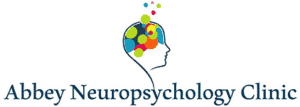Introduction
Unlike blood tests or throat swabs, testing for attention deficit hyperactivity disorder (ADHD) isn’t as straightforward. That’s why my mental professionals are coming up with new ways of diagnosis like brain imaging. Brain imaging helps us understand and treat ADHD.
Usually, mental health professionals will ask your child to complete a survey. The checklist usually contains questions that cover behavioral situations such as trouble concentrating or impulsivity.
However, every child does not manifest the same signs and symptoms of ADHD. For instance, some kids don’t have typical behaviors like inattention. Others may experience symptoms like moodiness or obsessive-compulsive tendencies.
But does brain imaging work? Continue reading to find out what science says about brain imaging for ADHD.
What Is ADHD – Attention Deficit Hyperactivity Disorder?
Attention deficit hyperactivity disorder, also known as ADHD, is a mental disorder affecting people’s behavior.
Usually, symptoms of ADHD are detected at an early age in life. They may become more noticeable over time, significantly when the child is shifted into different circumstances—for instance, when they start school.
Most cases of ADHD are diagnosed in children 3 to 7 years old. However, sometimes ADHD is diagnosed later in childhood.
Symptoms of ADHD may include:
- Having a short attention span
- Unable to stick to tasks
- Making a lot of careless mistakes.
- Constantly fidgeting
If you think your child has ADHD and are looking for the best mental health professional, book an appointment today!
Inside the ADHD brain
So, what does ADHD in a brain scan look like? There are brain scan machines and methods that researchers use to study the ADHD brain:
- Single-photon emission computed tomography (SPECT)
- Positron emission tomography (PET)
- Functional magnetic resonance imaging (fMRI)
One research group compared the ADHD in a brain scan of adolescents who have ADHD to those who don’t. The patterns from the brain’s gray matter accurately classified about 79.3% of the participants diagnosed with ADHD.
The National Institute of Mental HealthTrusted Source also found that some parts of the frontal lobe (responsible for impulse, control, attention, planning, and concentration) in people with ADHD mature slower than in those without ADHD.
The best ADHD treatment?
Treatment for ADHD often includes a medication course and therapy sessions. There are five types of medicine that your doctor may prescribe to you during the treatment of ADHD:
- Methylphenidate
- Lisdexamfetamine
- Dexamfetamine
- Atomoxetine
- Guanfacine
However, you must note that these medications have a lot of side effects. So, if you don’t want to put your child on medicine, you can opt for other cognitive training and possible treatments, such as:
- Neurofeedback therapy
- Cognitive-behavioral therapy
- Social skills training
- Behavior therapy
- Psychoeducation
Conclusion
But if you want to give your child the best treatment for ADHD, we suggest you book an appointment today! We offer the best therapy and cognitive training to help remove all hurdles in your child’s journey to success!
Sources:
https://www.additudemag.com/brain-mri-scans-adhd-research/
https://www.amenclinics.com/blog/10-ways-brain-spect-imaging-can-help-understand-and-treat-add-adhd/






